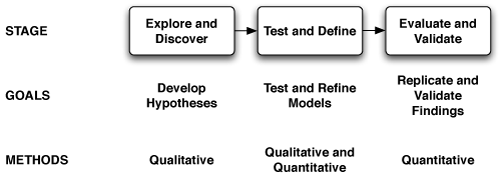The challenge of utilizing supercomputers effectively at ever increasing scale is not being met,1 a phenomenon perceived within the high performance computing (HPC) community as a crisis of “productivity.” Acknowledging that narrow focus on peak machine performance numbers has not served HPC goals well in the past, and acknowledging that the “productivity” of a computing system is not a well-understood phenomenon, the Defense Advanced Research Project Agency (DARPA) created the High Productivity Computing Systems (HPCS) program:2
- Industry vendors were challenged to develop a new generation of supercomputers that are dramatically (10 times!) more productive, not just faster; and
- A community of vendor teams and non-vendor research institutions were challenged to develop an understanding of supercomputer productivity that will serve to guide future supercomputer development and to support productivity-based evaluation of computing systems.
The HPCS Productivity Team at Sun Microsystems responded with two commitments:
- A community of vendor teams and non-vendor research institutions were challenged to develop an understanding of supercomputer productivity that will serve to guide future supercomputer development and to support productivity-based evaluation of computing systems.
- Put the investigation of these phenomena on the soundest scientific basis possible, drawing on well-established research methodologies from relevant fields, many of which are unfamiliar within the HPC community.
Team members brought expertise from multiple research fields with a specific focus on a sound working knowledge of concepts and methods appropriate to investigating human behavior. Socio-cultural concepts such as culture, ethnography, and social network analysis are not typically well understood in the computing community, sometimes leading to re-invention of methods already developed and validated in the social sciences. The first author is a social science professional with expertise in established practice. Other research-level expertise in the team included physics (both experimental and computational), software development (both technologies and human factors), and empirical software engineering. Given the breadth of the challenge and the small team size, a first principle was that every project demands careful – and quick – determination of appropriate outcomes, project constraints, and research methods. Conclusions must be founded in data and backed by justification for the design, execution, and application. See also Kitchenham et. al. for general guidelines on conducting empirical research.3
Social scientists have developed numerous methods that are both verifiable and reproducible in many contexts. However, the sheer number of methodological options makes it crucial that each project begin with clear research goals in order to identify the most effective combinations of concepts, research designs, information sources, and methods.
The research design presented in this paper is a three-stage framework, based on the scientific method, that allows the team to draw on multiple research disciplines appropriate to the phenomena under investigation. The framework is grounded in empirical data, validated by multiple approaches (“triangulation”), and applied to the practicing HPC professionals who actually perform the work being studied.
Research findings described in this paper must be understood in the context of the framework, as described in Section 2: definitions of the stages, methods used to collect and analyze information within each stage, and the relationships among the stages. Sections 3, 4, and 5 discuss how the framework was applied to studies of the HPC software development community. Although the productivity research program is still in progress, significant findings have already contributed to the community’s understanding of HPC software







